MV-22B Osprey aircraft with the 24th Marine Expeditionary Unit, Iwo Jima Amphibious Ready Group, landed on HMS Queen Elizabeth earlier.
The U.S. Marine Corps say thatr the 24th MEU transported Marines and equipment assigned to Marine Fighter Attack Squadron 211 on HMS Queen Elizabeth’s Carrier Strike Group.
An MV-22B Osprey with the 24th Marine Expeditionary Unit, Iwo Jima Amphibious Ready Group, has landed aboard HMS Queen Elizabeth. pic.twitter.com/nuZ1MPk4t4
— George Allison (@geoallison) May 11, 2021
“The Navy-Marine Corps team is humbled and proud to represent the United States and serve alongside our UK counterparts.”
What is the Carrier Strike Group doing?
HMS Queen Elizabeth and her Carrier Strike Group are currently exercising alongside allied nations in and around the Scottish islands as part of the massive Strike Warrior exercise.
The Royal Navy say that Exercise Strike Warrior will involve more than 20 warships, three submarines and 150 aircraft from 11 nations and is a final test for the Carrier Strike Group ahead of its first operational deployment to the Mediterranean, Indian Ocean and Asia Pacific.
“The exercise, which will run for two weeks, will see the task group pitted against warships from NATO’s Standing Maritime Group 1 in waters off north-west Scotland to prove it is capable of undertaking high intensity operations against the most demanding adversaries. The culmination of Strike Warrior will see the Carrier Strike Group certified ready for deployment, at which point operational command will pass from the Royal Navy’s Fleet Commander, Vice Admiral Jerry Kyd, to the Chief of Joint Operations, Vice Admiral Sir Ben Key.”


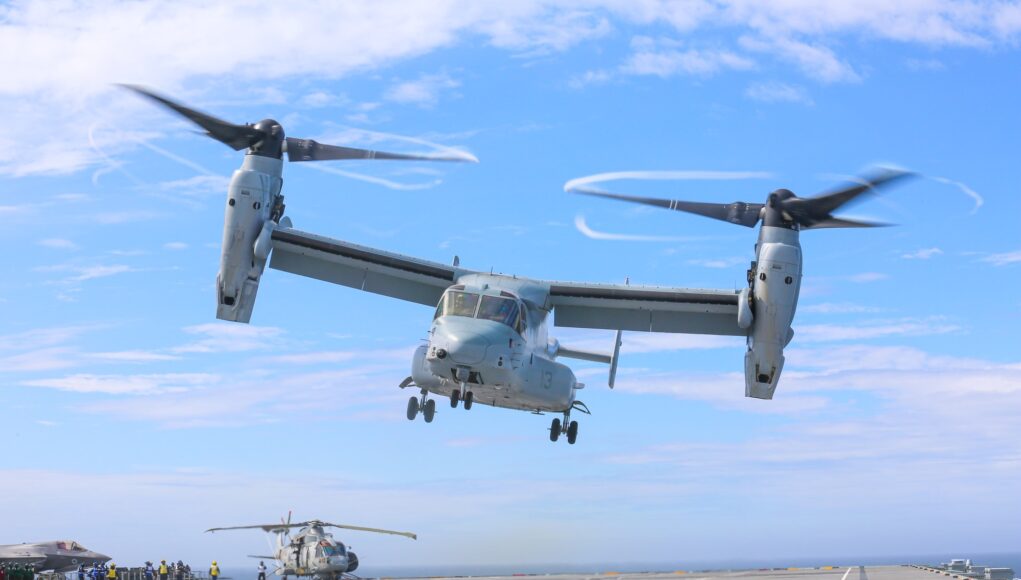

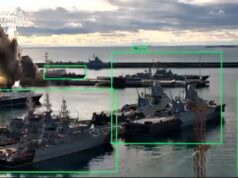
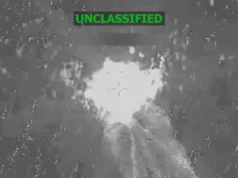

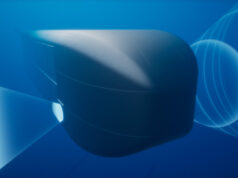
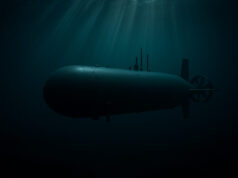





I would love to hear what the USMC really think about the QE or for that matter what the RN staff think about the capabilities of the MV-22.
definately…..really hoping we get some articles in that vein in the course of this deployment!
Mother of God – look at the spelling – “definately” – fearlesstunafish is ‘H’!!!
Quite a lot by all accounts.
I think the 7 month global deployment will be an interesting exercise, the USMC have been directly involved in the development of the QEC carriers so they will be interested to see it put into practice.
As to articles i think you will get a few official ones the joint exercises, but i think the USN will ensure they focus on the achievements and joint exercises and play down on the life aboard. I think the BBC documentary next year will probably cover that better.
Privately official reports will probably be generated for how to conduct future operations with the RN Carriers, how a QEC could be embedded with a USN ARG (as i expect one of the carriers will do that in a couple of years), Plus the possible considerations for a USN Medium Carrier or a dedicated USMC carrier.
The other fun one will be word of mouth from the USMC/USN crew as they may lord up the QEC deployment as choice tour to go for LOL
I’m sure the Marines love the fact that British ships aren’t “dry.” lol
That is going to be interesting how the USMC will manage that, they cant make drinking off limits to the US crew with the RN crew making full use of the mess, So after a 7 month cruise those crews are likely to find their next USN deployment rather disappointing LOL
I wonder if this is a way for the US to demonstrate to the RN the benefit of having these rather than simply operating them. If the Royal Marines are to return to their raiding roots, surely the speed and range of the Osprey would ideally suit them.
Yes, but the aircraft is now over 30 years old, blooming expensive and very maintenance heavy. I suspect the USMC will go will the Bell V280 Valor over the Defiant to replace their UH-1Y Hueys. The Valor has a much higher cruise speed and nearly twice the range of Sikorsky’s Defiant, so can keep up with an Osprey. Bell have promised that the asking price will be competitive and that maintenance will be much lower. The Valor is the aircraft I see replacing our Merlins in the near future.
If Bell win the US Army contract along with the USMC one, I would expect them to announce an Osprey Mk2, using lessons learned from the Valor program.
I agree for all their abilities the Osprey would be a pile of trouble financially and maintenance wise. Valor seems like a better more realistic bet and probably would suit the Marines needs better in potential operations while fulfilling other needs too in replacing more run of the mill operations the fleet and army need.
I am a long term supporter of the V22 but have to say I believe the Defiant will wing against the Valor and that the UK should hang fire and replace all its non chinook/apache fleets with the defiant.
The reason I have been turned around is that the defiant gives all the benefits of a normal helicopter, but with the speed and range of the V22. Support and training costs are likely to be less and most importantly the uk could order 400 of these at a very sensible price and reap the rewards of mass standardisation over a 10 year period.
We really do need volume in our helicopter force and the only way I see us being able to afford this is through the winner of the FLAAS.
I agree in some respects, the Defiant will provide a better battlefield support helicopter for the Army, as it will be nimbler, especially at low level flying. Whether it will be easier to maintain will be debatable. The main rotor gearbox and rotors will be under a lot more stress than the Valor’s prop-rotors. As they have to provide both lift and thrust (up to a certain speed). I can foresee issues with the rotors due to the speeds they will have to sustain over their lifespan. This is because Sikorsky can’t slow the rotor speed down, as the rotors are the only means of providing lift, no supplementary wing, thus they will be under greater strain as the aircraft flies faster. Rotor tip speed is one of the main hurdles preventing a helicopter from flying faster.
I think the Valor is the best option for the Navy, as it is for the USMC, due to it much faster cruise speed. The Defiant has a projected speed of 250kts, yet has only just surpassed 205kts. Whereas, the Valor has already hit 305kts with the crew saying there was still a ways to go. For the USMC, range as well as speed will be their primary requirements. The Valor uses its main wing for lift, it helps to significantly increase its range. The Defiant certainly won’t match the speed and range of an Osprey, which the Valor can do already.
If Bell are true to their word, then the Valor “should” cost a little more than a Blackhawk. It is the best candidate to replace both versions of Merlin. In the sub-hunting role, it has a greater endurance so can spend more time on station. It has correctly sized rotors, so the downwash is a lot less. But for the RMs in the raiding role. Due to its speed it will give defenders much less time to react to it. But as it has longer range it can raid and extract much further inland.
According to the US Army requirements, both aircraft had to be able to land in the same footprint as the Blackhawk, which coincidentally is the same as the Puma. This was one of the main reasons why Puma wasn’t chopped. The SF community required a helicopter that could land a team in a compound.
Either aircraft would massively benefit our armed forces. But if I had to chose, I’d go for the Valor.
Seems like USAF may be aiming a little higher than just leveraging Valor for a V-22 replacement, with some intriguing technical capabilities per link below. From the article “…the US Air Force Special Operations Command (AFSOC) said it was looking ahead for a VTOL aircraft with “jet speeds” to replace its Bell Boeing CV-22 Osprey tiltrotor.”
I doubt they would be interested in what’s illustrated, but those are just concept outline diagrams that probably bear little resemblance to what would result from a new design.
https://www.flightglobal.com/helicopters/us-air-force-signs-research-contract-for-bells-high-speed-vtol/143611.article
Well according to an earlier ukdj article, the Osprey costs twice to run and carries half the troops of a Chinook.
Hmmm…
Osprey is faster and longer range. But is that the key? I mean do you want troops on a limb, 400 miles away?
The other point is… Well, what is intended. Raiding or Assault. What is the difference? And once we have determined what we are doing, what do we need to do it with?
Exactly the simple fact is we really don’t have the capacity to use them to their strengths even if we could afford them raiding is going to be the priority over assault the latter would only be done in accompaniment with allies and in that case best to combine our elite troops with US Ospreys if required with all the support from US support assets they really require to be used to their advantage. Ultimately less ultimately capable (where we can’t exploit it much) but more useful (where we do) and more affordable and flexible over all is the better bet even if it means waiting a bit longer.
It would cost well over a £1 billion just for a fleet of 7, what do you prefer, the Type 31 program or a few Ospreys?
Two proven and very useful additions for our armed forces to have, I’m sure we could benefit from having both?
http://www.navyrecognition.com/index.php/news/defence-news/year-2015-news/june-2015-navy-naval-forces-defense-industry-technology-maritime-security-global-news/2830-usmc-mv-22-osprey-landed-aboard-royal-netherlands-navy-jss-karel-doorman.html
We’ve got Argus for now. Better keep going with that as a Auxilliary Aviation ship and get a purpose build design when she needs replacing than get some sort of weird half LPD, half replenishment tanker, half auxilliary aviation hybrid that we already have most of the functions covered by other platforms.
No, we cannot have any!
Oooh…go on…you nasty beast 😊
😜
We won’t get any either. Way too expensive, We’ll just invite the USMC …. oh hang on, what a great Idea, lets not buy anymore F35’s either ! 😂
DM, sadly you are right. Being old enough to remember 1982, I can recall the problem of connecting with the fleet once it was beyond helicopter range of Ascension Island. My wish list still has 5 CMV-22B for the FAA, for that 1100 mile ship to shore connector.
In a world with money no object of course.
Til then, its extended range Chinooks or go without. Cost not worth it for the extra it brings. 1 billion buys lots of Blackhawk, for example, or T31, or Protectors, or dare I say more Merlins!!!!
The latest AW101 with the uprated engines, can reach out to 900-925 miles, which is getting close to the 1100 miles of CMV-22B. Fully equipped CMV-22B with the initial spares package cost $105 million each, so $525m for my fantasy 5.
Oh, cheaper than I thought. But still ridiculously pricy.
You can then add in the cost of setting up maintenance lines and training the cost begins to rise extremely rapidly
True, but that applies to any aircraft you buy.
But why add the extra cost and infrastructure problems for a new type with negligible benefits when we are already committed to a different solution to the problem? It makes zero sense
Staying in contact with the carrier group, may make zero sense to you, but it makes a lot of sense to me.
You might think it’s worth losing the T31 or T32 fleet so that the mail can be delivered 200 miles further out to sea but I doubt many sane people would agree with you thankfully
I am old enough to have seen, Labour, Conservative & Coalition Governments all claim to have no money, yet by magic they find billions for their pet projects. Those projects fail & are swept under the carpet, with no one held to account. It is an old trick to say that to have Peter you will need to rob Paul. Those of us with grey hair have heard it too many times for it to be credible.
Re CMV-22B. Its not just mail, but missing spare parts & crewmen with a needed skillset, without which the carrier group is compromised.
Would the MV-22 be a good AWAC platform using the Ericsson’s system.
UCAV is the future for carrier AEW.
For sure but still needs to be a VSTOL platform for the likes of the UK and other navies.
If you talking about the sketch they did a while back with the triangular radome on the roof. It will suffer the same issues as the Hawkeye, namely the fuselage will obstruct the downwards view. The prop-rotors will need filtering out to prevent shuttering.
One of the trials they did do about 20 years ago now, was to mount the radar from a Viking on the ramp. That then lowered further, below the aircraft so it had a clear view downwards. It failed miserably as they didn’t account for the ramp vibrating, which caused the radar to fail.
One other option would be to mount four aesa panels around the aircraft’s fuselage, to a 360 view. This would help eliminate the blind spot caused by the wing/tail and engines. If you included a panel directly underneath the aircraft, this would eliminate that blind spot. You could mount the panels on a moveable mount aka Captor-E to increase the field of regard (view) from a fixed +/-45 degrees in elevation to +/- 75 degrees.
The issue would then be the size of the panels, as larger equals more range and better sensitivity. But then means fitting them becomes more difficult.
The other issue the Osprey has is that the aircraft is unpressurized. Thus limiting the operating height and its radar’s detection range. Unless the crew are given piped oxygen, as a hands free system wouldn’t last long enough.
Hi DaveyB yes I was thinking of the AESA panels mounted on the aircraft and as an alternative to the Merlin Crowsnest option. But I understand that the Merlin Crowsnest was already a budget decision back in 2015 and I am sure has the same operating height as the Osprey while the Osprey would have a real advantage in terms of range and speed and probably in terms of system performance as the AESA system would have more range and sensitivity vs the existing option of Thales upgrade of the Cerberus radar system used by the Sea King ASaC.7 helicopters with modified Thales Searchwater 2000 AEW radar with mechanical scanning. Also the market for such as system could be interesting given the number of navies deploying pocket carriers (Italy, Spain, S Korea, Japan, maybe Australia) but also the US as they move to have F-35 operating from LHP.
Leonardo have developed the AESA Osprey radar. This a modular radar where you can additional panels to suit your requirement. Such as using four to give you a 360 degree view. It operates in the X band and has a published detection range of 200nm (370km). However, they don’t state the size of the target so it may be comparable to the Searchwater 2000 in performance. The Italian Navy are looking at this as a replacement for their HEW-784/APS-748E equipped Merlins. It has been plagued with issues, ranging from reliability to detection resolution. It replaces the standard under nose radar of the Merlin, so is great for look down and horizon searches, but not so great for look up. The Italians are looking at placing four of the Osprey panels around the aircraft on the side of the fuselage. This will give it a better look up search.
There is another helicopter based AEW, which was developed by Russia. This uses the Kamov Ka31 coaxial helicopter and is fitted with the E-801M OKO (EYE) radar. This radar uses a huge 6x1m planar array that folds out from beneath the aircraft. It is a traditional pulse doppler radar. Judging by the size of the antenna it is not an X-band radar and is more likely upper S (3 to 4Ghz) lower C (4 to 6GHz). It will not have the same target resolution as the Crownest’s Searchwater. This helicopter/radar combination is used by Russia, China and India from their carriers.
With both South Korea and Japan getting in the carrier game. These two Nations will likely be looking at a VTOL AEW requirement.
The USMC had the MUX program. This was supposed to be a ship based VTOL UAV that could do close air support (CAS), reconnaissance, communication node and airborne surveillance. The USMC finally realised that one platform could not do all these roles. After cancelling the program, they are still looking at the requirements but are likely to split the roles. The Bell V-247 Vigilant was the concept aircraft that was likely going to get the nod for CAS, but it may have fallen short in the electrical power requirement for a decent radar. Northrop Grumman said they had a variant of the AN/APG-81 that was going to be earmarked for the role.
Carrier on board delivery, Merlin and Crowsnest successor, F-35B carrier refuelling? Look no further…
https://www.youtube.com/watch?v=y9633v6U0wo
2 of these bad boys flew over me garden low this evening at 1650 hrs here on the north east coast (that’s far far away from weegieland 🚽💩for our wee pals doon sooth) 👍🏻
magnific they are most impressive in real life , I thought seeing Apaches that flew over a few months back were a sight but man these bad boys 👏🏻 A great shame HM didn’t invest for the RN . Not sure if they had been at Leuchars ? Or direct from US ship at sea?
🏴🇬🇧
Can Condor in Arbroath take helis?
Was an old airfield so assume so.
Blast from past. Been up in a glider out of Condor.
Look, Daniele. An Osprey and a bagger in their natural habitat.
It would be nice to have them, but I would rather focus on the projects in the pipeline. Buying some would cost a small fortune, not to mention the added requirements of training air crews, ground crews, and the additional training for operating from the carriers… all for what would likely be a small order.
Extended-range chinooks will suffice, and hopefully, the plans for a new type of helicopter will add some much needed volume to our rotary wing fleet.
Are the MV-22s staying on board for the deployment ???
I don’t think so or we would have seen a definite detachment, plus with the 7 Merlin’s of 820 (Pingers & Baggies) and 18 F-35B they don’t really have hanger space for a dedicated V-22 flight as well. Even the Merlin HC4s are located onboard Fort Victoria for the deployment.
The QE can fit upto 50 aircraft. So 18 F35B and say a dozen Merlin still leaves space for Osprey if they were needed on the deployment. The QE class was designed with a wide enough margin to take current and predicted aircraft and UAVs.
Osprey could easily come along if the USMC and RN wanted them.
Good Morning geoff. This is geoff and just to confirm that you are not me!!😆 Please can you change your user name seeing I was here first and have been for a few years. Cheers mate
There are geoffs. Then there is THE geoff. 😀
Hahaha Daniele-Aw shucks, my face is red with embarrassment!
‘Geoff the First’ perhaps🤔
Haha! You’re fine mate.
Weather forecaster geoff?
I liked the “UKDJ Africa correspondent” one best. 😁
Too bad there’s no longer a rum ration. The marines would have enjoyed that.
I saw two of these flying side by side over the Yorkshire dales yesterday looked impressive very slow and noisy but impressive